Ultimate Guide to Product-Led Growth with 9+ Examples

Product-led growth (PLG) has become the cornerstone of most successful software companies.
Think Zoom, Slack, YouTube, Notion, Pinterest.

All of these companies were able to scale exponentially by leading with their product as a growth engine. Leading with their product meant achieving faster growth and lower cost of customer acquisition (CAC)
According to Wordstream, the average cost-per-action on Google Ads is now $75.51. That means it takes $75 just to get someone to sign up for your product! That's not even the cost to get them to become a paying customer. Channels like Google and Facebook Ads are more expensive than ever. SaaS businesses need to find scale elsewhere -- and that's where product-led growth comes in.
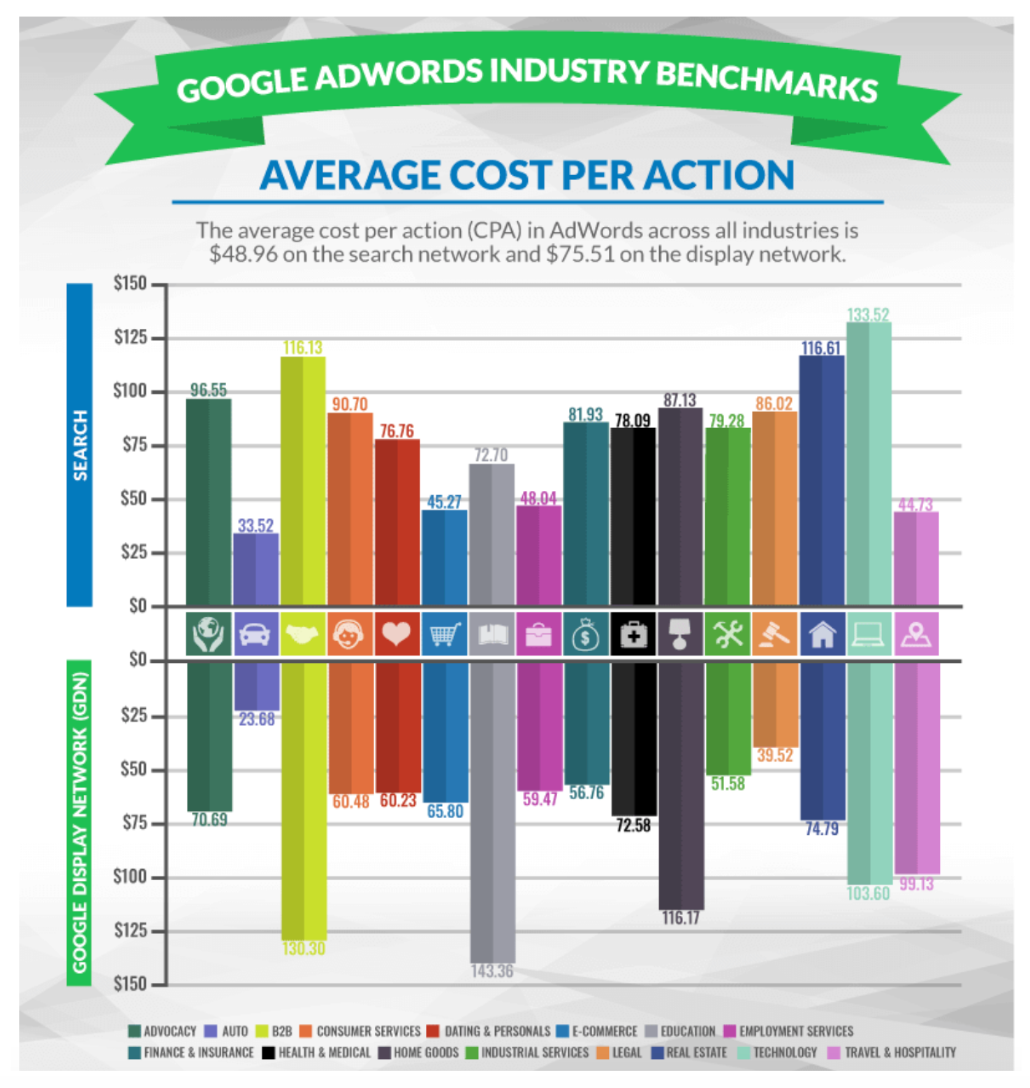
I've built several product-led SaaS businesses that went on to make millions in revenue. I promise, scale happens way faster and more easily with PLG.
In this post, I'll give you real world examples of product-led growth companies (and not just the ones you've already heard of) so that you can emulate and make your SaaS business soar.
What is Product-Led Growth (PLG)?
Product-led growth (PLG) is a business methodology where the product itself serves as the primary vehicle for customer acquisition, conversion, and expansion. Unlike traditional sales-led or marketing-led growth models, PLG prioritizes the user's experience with the product. The idea is simple yet powerful: create a product that users love, and they will do most of the marketing for you through word-of-mouth and organic evangelism.
And the results are fully clear: product-led growth organizations outperform their peers according to this McKinsey study.
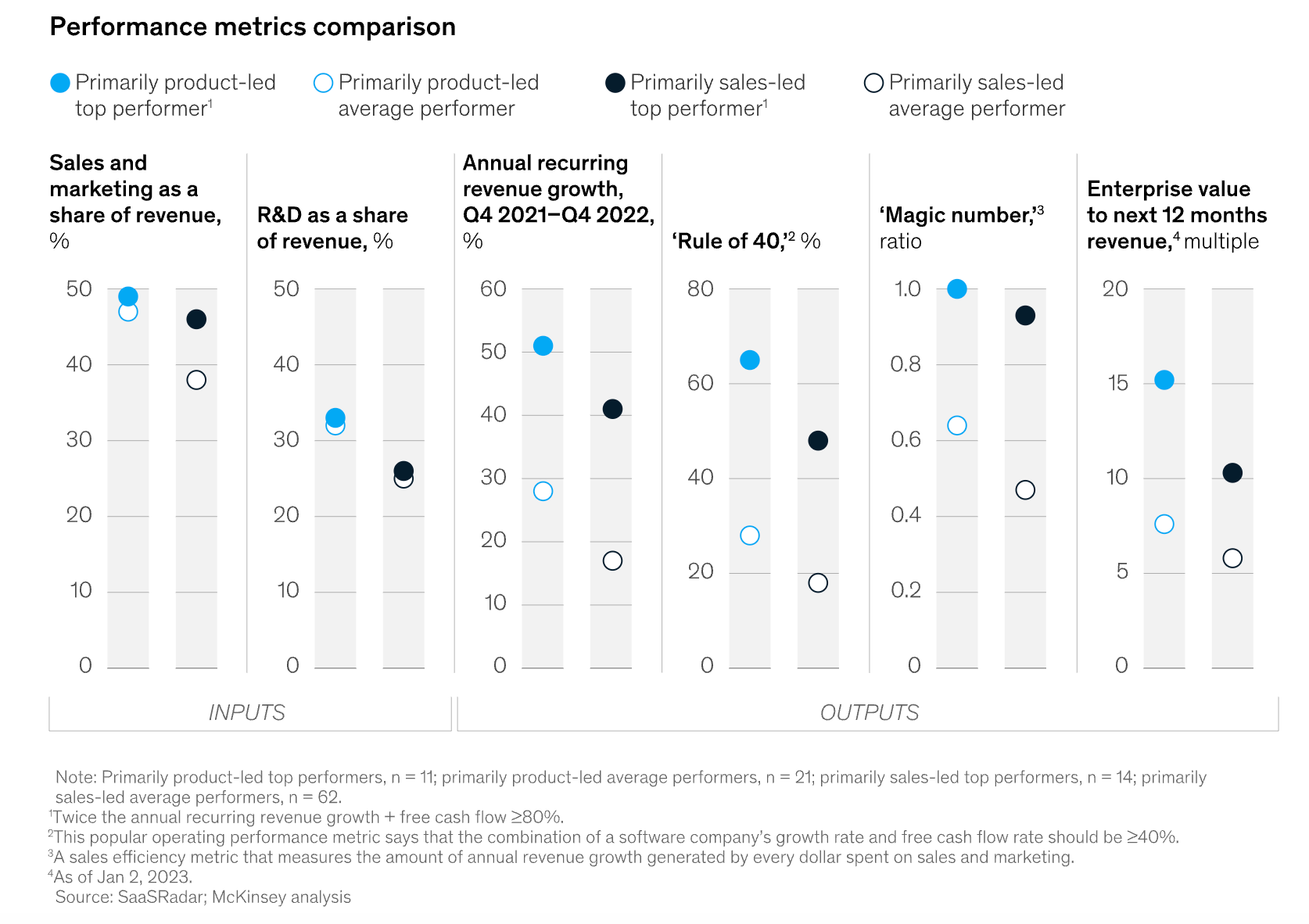
Key Elements of PLG
In a PLG model, the focus is on a few key metrics and functions to accelerate growth:
Freemium: Giving away some or all of the product for free. Hook your users on the utility, then get them to pay later. Letting buyers self-educate.
User Onboarding: Simplified and intuitive onboarding processes that helps users get to a fast time-to-value.
Product Value: Ensuring the product delivers immediate and tangible value. This makes a user more likely to pay for the product or tell their friend/colleague about it. This can create a viral loop mechanism whereby users begat new users.
Upsell Opportunities: Seamlessly integrated upsell and cross-sell opportunities within the product -- giving users a taste without giving them the whole enchilada.
Product-led sales: Every member of the go-to-market team from SDRs and account executives to account managers, customer success, solution engineers, product teams, and marketing can drive revenue from product usage insights. Understanding key trigger points in the product and predicted lifetime value metrics can help sales determine where to focus.
Also read 📚: 12 Product Tour Examples from B2B and B2C SaaS Companies
Also read 📚: 11+ SaaS Growth Hacks You Need to Know and Try
Also read 📚: How to Reduce SaaS Churn: 8 Actionable Steps
9 Examples of Excellent Product-Led Growth Strategies by B2B and B2C SaaS Companies
1. Loom: B2C SaaS Using Freemium
Loom is a free-to-use (freemium) product that enables users to record their screen and share video recordings with team members. Loom nailed PLG with their freemium offering by enabling users to get a taste of the features -- 25 videos -- completely free of charge.

This works for Loom for two reasons: First, the nominal cost of a video recording is very cheap. So giving it away some recordings for free makes sense. Second, they know that real power users will find utility and need way more than 25 videos and 5 minute long recordings.
Key insight: I imagine Loom arrived at those numbers (25 videos and 5 minute long recordings) by looking at product usage data -- they likely determined that those numbers were the threshold at which casual users became power users. Use Freemium married with data to price your product for product-led growth.
2. Hello Bar: B2C SaaS with Product Virality
Hello Bar is a stupid simple product for adding widgets, popups, sliders, and modals to your website.
In the early days of Hello Bar they gave away an unlimited free plan. The catch? You had to keep a small icon on all of your Hello Bar widgets that showed it was "powered by Hello Bar." In this way, anyone who ever saw a Hello Bar "in the wild" knew how to make their own widgets on their website. It was genius. Some people paid for the product, but many more used the free version with the Hello Bar logo -- so the product spread like wildfire.

This strategy is a copy of Hotmail's famous launch strategy 20 years ago. Every email from a Hotmail user had a small footer that said "get your own free email with Hotmail." In this way, every email from a Hotmail user was an opportunity to create a new Hotmail user. Genius, right?
Key insight: You can give away your product entirely free if you've built in a viral mechanism for acquiring customers. This works because you can reach critical mass before monetizing. In other words, once you have thousands of free users, you can simply begin charging for the services. This strategy works best for B2C products with large audiences.
3. Okta: B2B SaaS With Product-Led Sales
Okta is the premier identity management company. Okta helps companies implement single sign-on and multifactor authentication for their workforce.
It seems weird that an enterprise SaaS company with such an enormous average revenue per user (ARPU) would have a freemium offering -- but they do! Okta gives away most of their product for free for 30 days.
What happens next is what's really interesting: Okta uses Gainsight and Tableau dashboards to identify the best prospects for their sales team. Companies that implement Okta quickly and explore many product features are prime targets for the sales team to prioritize.

For instance, customers using Okta for "single sign on" who action on the Okta "governance" product are prime upsell target users.
Key insight: Product usage data can be a competitive advantage. Explore which metrics matter most for your business and use them to help the sales teams move faster and more effectively.
Also read 📚: The 17 Most Important SaaS Metrics
4. Slack: B2B SaaS with Product Virality
It wouldn't be a product-led growth examples list without mentioning Slack. Slack burst onto the scene in 2013 (founded in 2009) with a product-led team communication platform. Is was revolutionary because they were going up against huge players like Microsoft that sold their Teams product in an expensive bundle to companies.
In this "red ocean" industry, Slack flipped the script and gave their product away for free. The catch? They made it stupid simple to invite teammates. Eventually at a certain point a team needs to start paying to use the product, but when only a few people at a company are using it, it's free. But the thing is, the more people using it, the more utility it has. So there is rapid adoption effect. Basically, Slack only needed a few people at a company to use the product, and then the network effects would take hold from there.
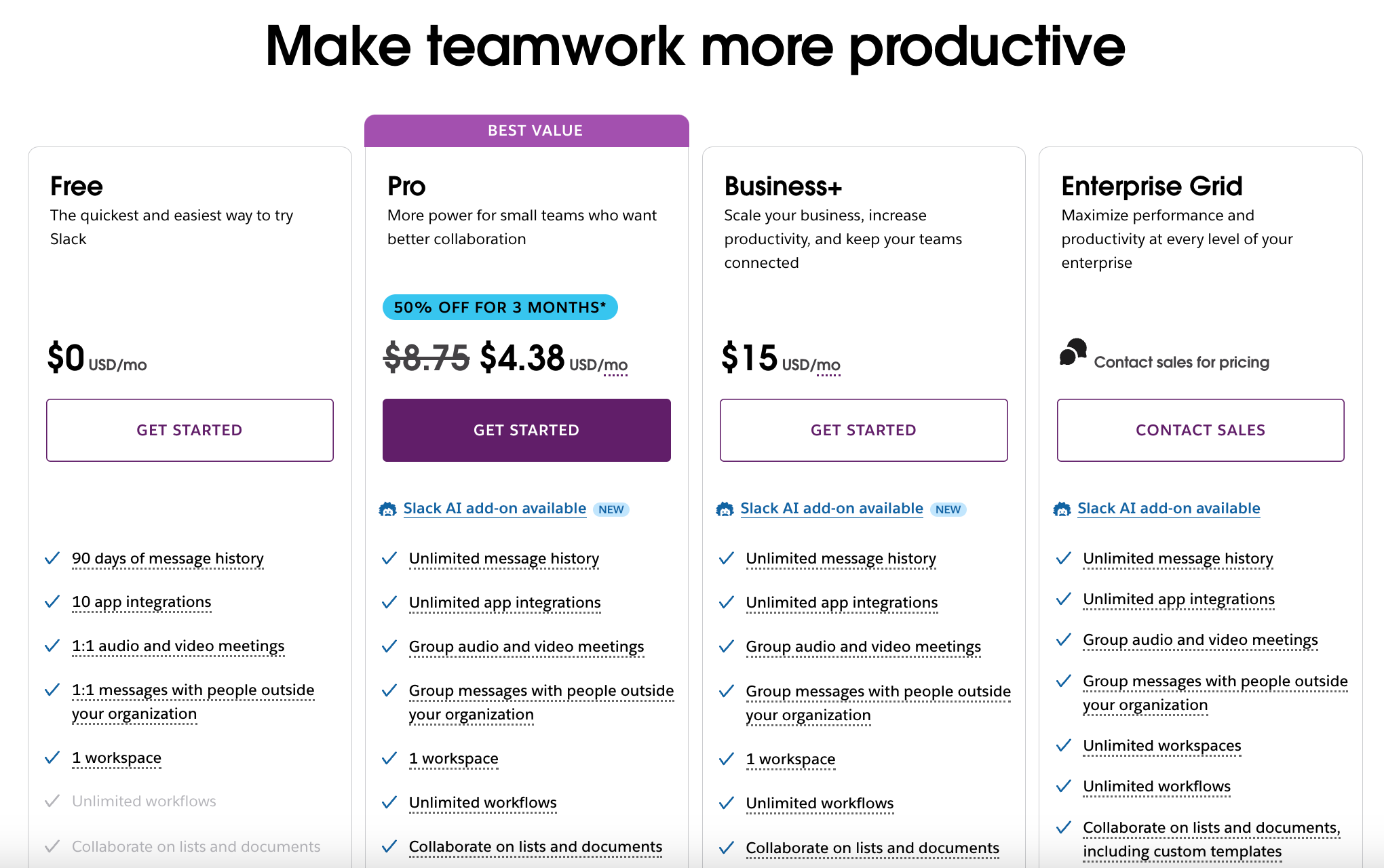
What followed is one of the fastest rises in startup valuations ever!
Side note: I believe a large part of Slack's success was due to great design. Most team communication platforms were outdated and clunky. Slack burst onto the scene with a seriously modern UI that mimicked popular social media apps and made using the product fun. Don't sleep on design!
Key insight: Give the product away for free, particularly when there are network effects in your ideal customer segment.
5. Zapier: B2B SaaS with SEO Product-Led Growth
Of all growth marketing channels, search engine optimization (SEO) is the most product-led and most scaleable of all... if done right.
Zapier is a universal connector app that enables businesses to automate workflows and connect one app to another.
Zapier offers a freemium plan, but more importantly, they used their product to get an insane amount of search volume for free using SEO. In fact, Semrush shows they get over 5 million organic visitors per month!
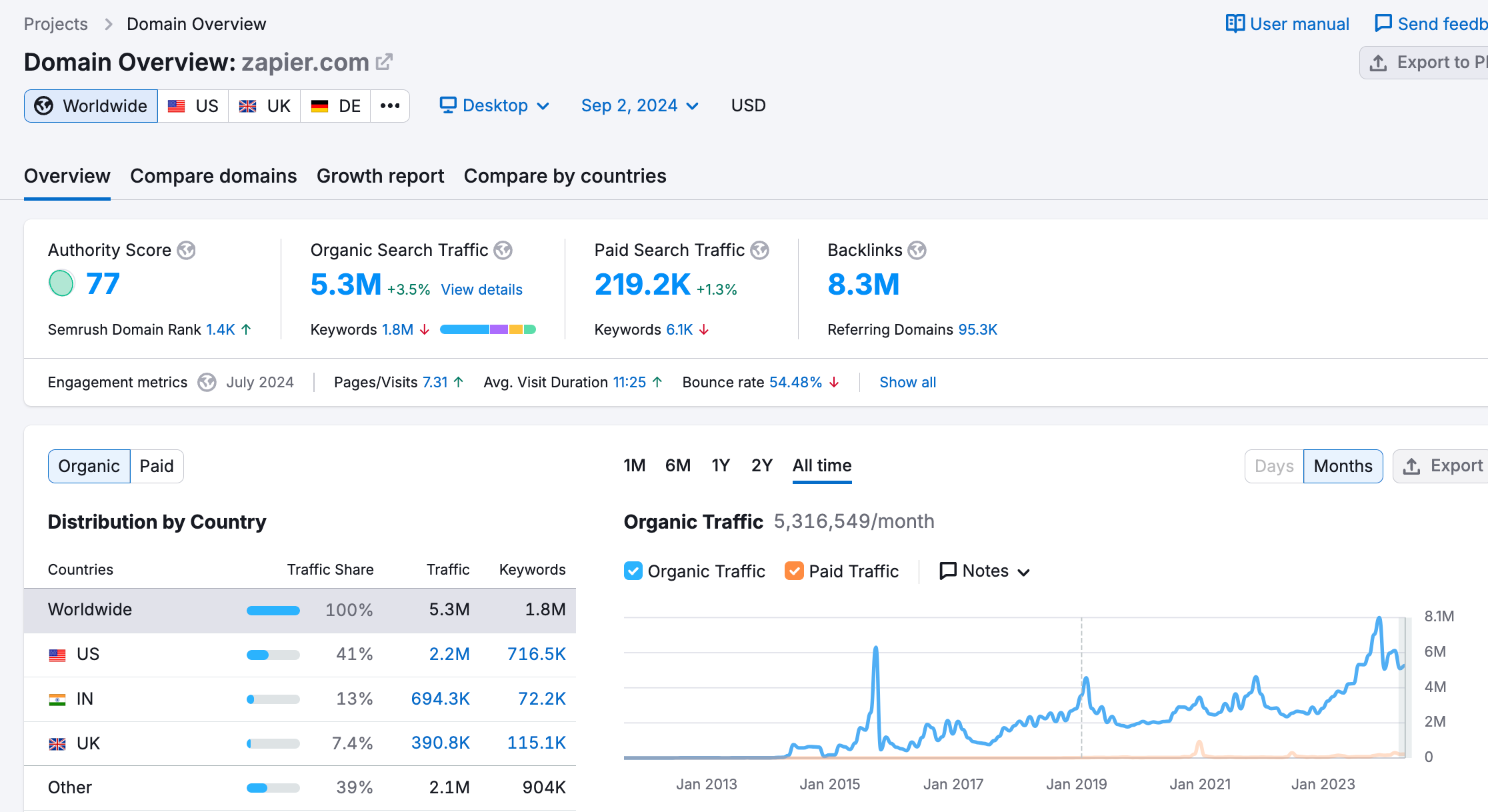
How? They've published thousands of productized SEO pages for connecting one app to another. In other words, there's search volume for basically every query like "how do I connect Mailchimp to Calendly." Zapier has a page that meets that intent (pictured below). And they have thousands of these pages: for connecting Mailchimp to Calendly, and Calendly to Squarespace, and Calendly to Slack, and Calendly to Zoom, etc.
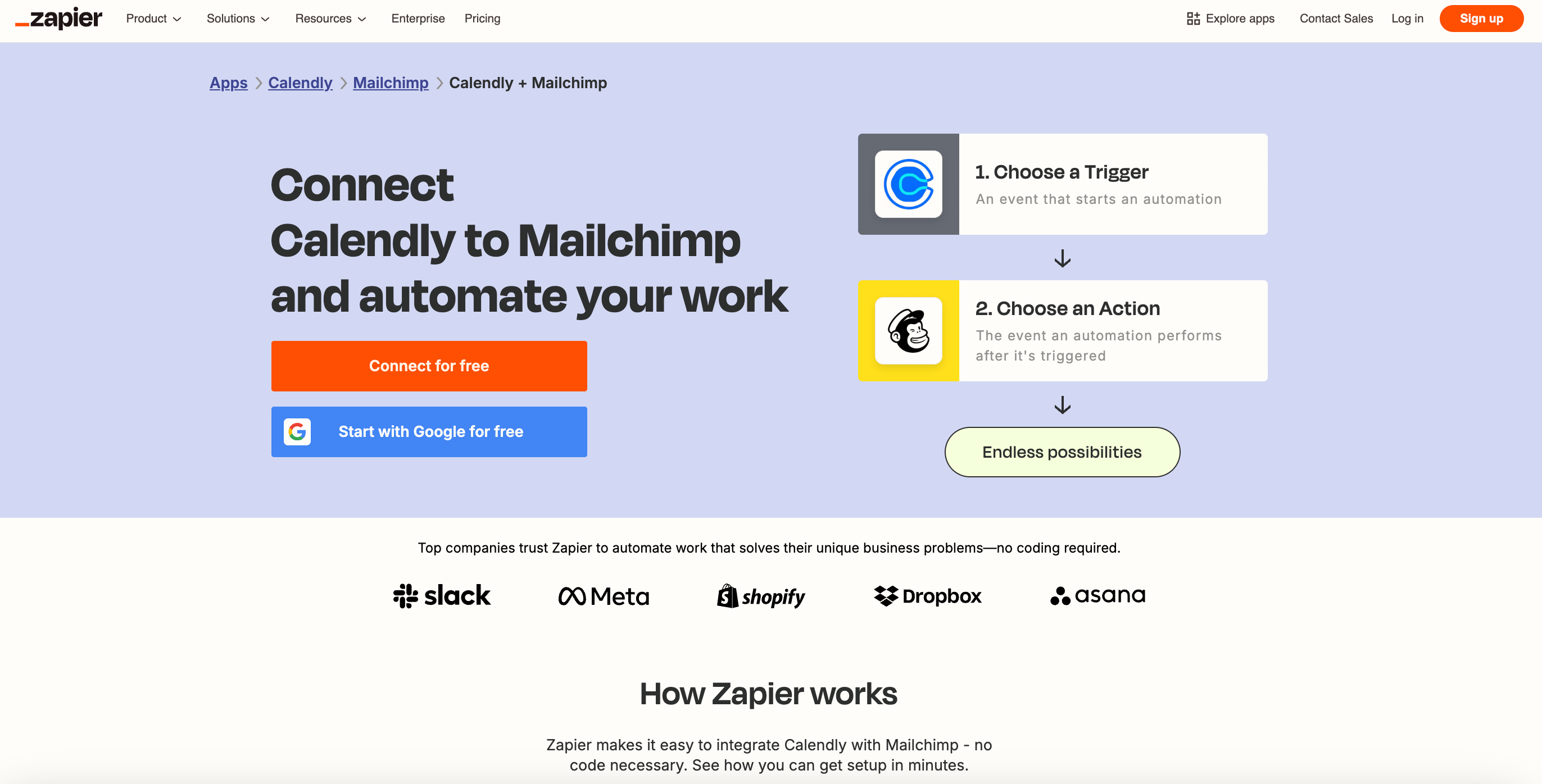
Key insight: This one won't work for every SaaS business, but for ones with tons of search volume and many long-tail searches, you can expose bits of your product programmatically and attract a ton of organic traffic.
6. Clickfunnels: B2C SaaS Using Webinars and Dark Patterns
Clickfunnels enables small online businesses to do a million-in-one things. It aims to replace all the tools an entrepreneur needs to sell a product or service online -- websites, hosting, landing pages, email marketing, webinars and more. It's a sticky product that's grown to over $160 million in revenue on the back of a pure product-led motion.
But one of the product's super power isn't your traditional PLG motion. They love webinars. In almost all their marketing, they point you to super detailed, ultra-captivating webinars that sell the product without actually selling it. The webinars hit on the pain points and speak perfectly to their entrepreneurial customer. Founder, Russell Brunson is a self-proclaimed sales expert -- and you can see it in their webinars.
Even more impressive, they use dark patterns when a user goes to cancel their account. What this means is basically a user has to jump through some hoops in order to cancel. There's not just a shiny "cancel now" button. Of course, one of the patterns in their cancellation flow asks you to join a webinar (the goal is obviously to convince you to stay).
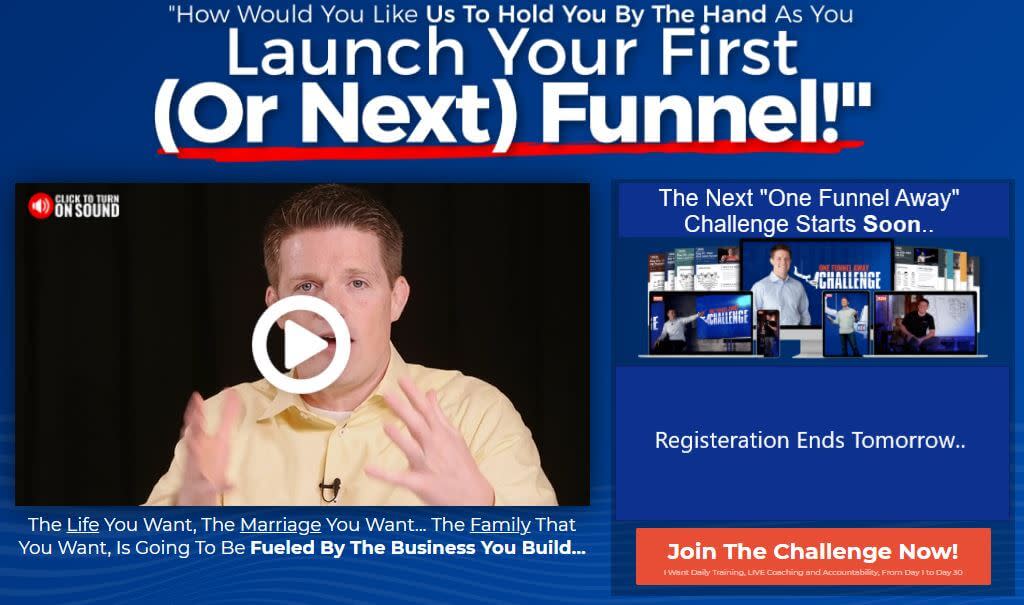
Key insight: B2C SaaS businesses in particular are great webinar opportunities. If you can touch on your customer's pain points (informed by data if possible) via webinar, you're likely to convert them.
7. Ahrefs: B2B SaaS with SEO (Free Tools)
Ahrefs is an all-in-one suite for SEO experts. They offer everything from keyword research, to competitor research, to website audits and historical search data.
Similar to Zapier, Ahrefs lives in a large SEO space. All day long, people want to know "what is the search volume for XYZ query on YouTube" (plus other iterations of this search).
When you search on Google for that exact query, you'll see they come up in the top couple results.


They have a whole host of other free tools SEOs love, including a domain rating checker, backlink checker, rank checker, website traffic checker and more. In each of these free tools, the user searches in Google, lands on Ahref's free tool, and gets a small taste of what the entire platform can do.
Key insight: This strategy is best for SaaS products with many different tools and products, but if you can expose those features of your product to Google searchers, you have a great product-led strategy for acquiring customers... for free.
8. Grammarly: B2C SaaS Segmentation and Onboarding
Grammarly is a personal AI writing assistant designed to enhance your text by achieving the goal of the text and ensuring that your message is clear and grammatically correct.
Once you sign up, they ask you a few basic questions to know a little more about you and how you’ll be using Grammarly. They walk you through a quick guide on how to use their editor and even provide you with a demo document to get the hang of things.

But all of this is by design. Grammarly drops you into a fully personalized experience based on your answers. This enables them to segment their audiences incredibly well and incentivize upgrades and referrals more precisely.
They also onboard users incredibly well with product tours. Segmented users are dropped into unique product experiences that also have unique product tours! Suffice it to say, Grammarly crushes segmentation and onboarding.
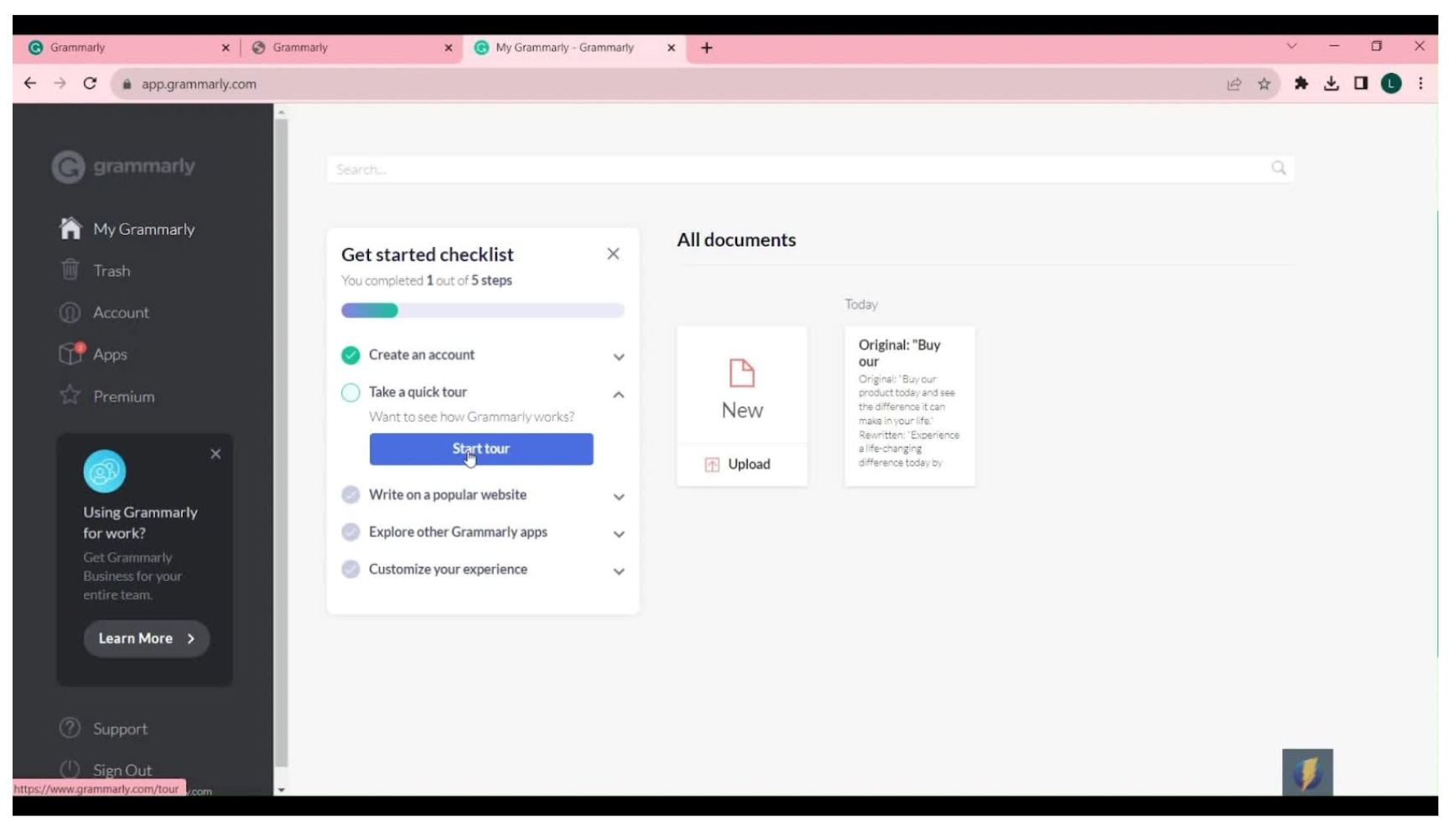
Key insight: Use your product and signup data to segment your users and onboard them accordingly.
9. Calendly: B2C SaaS Freemium, Site Redesign, and Iteration
You've probably heard of Calendly. It's a simple scheduling tool most recently valued at $3 billion!
Calendly was able to become the leader in the scheduling SaaS market via a product-led growth motion. How? First, they're Freemium. For $0 you can use Calendly to schedule 1-on-1 meetings -- but only meetings of one event type. So if you want to schedule 15 minute touch base calls with your team, you can do that. But if you want to enable sales prospects to schedule hour-long sales calls, you'll need a paid account. They make you pay the second you want to schedule more types of calls or send call reminders (so that people actually show up!).
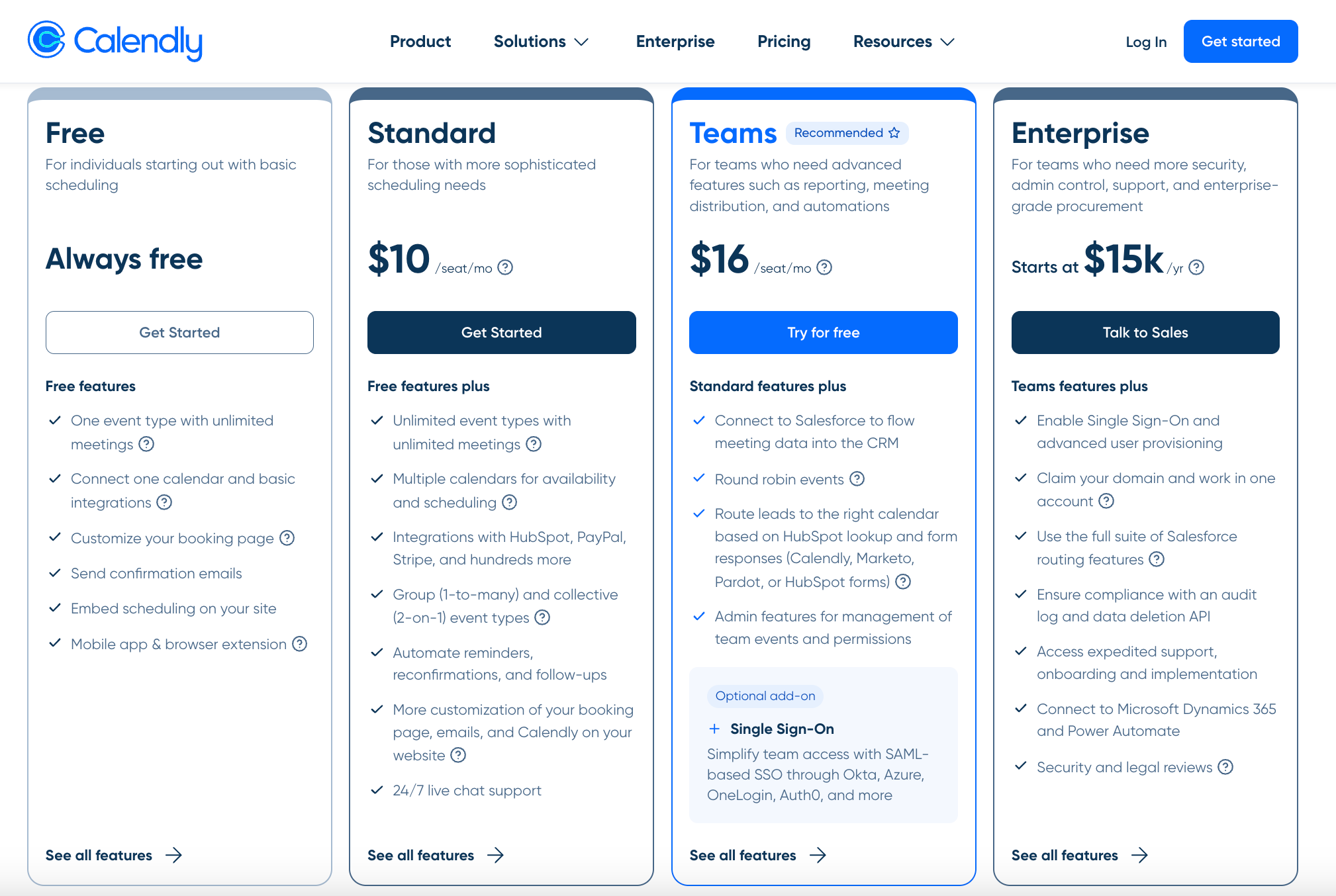
They use Freemium perfectly. Their pricing model separates the hobbyists and consumers from the serious (and monetizable) users.
Next, Chief Revenue Officer, Jessica Gilmartin says they rethought their website, the CTA locations, and how they speak to their freemium users, resulting in 50% more signups for the product. She says, "First, we did user research across our website and looked deeply into conversion rates on each page taking into account site visitor paths. We identified that people visiting calendly.com wanted to either sign up for Calendly, talk to someone, or see Calendly without signing up (i.e. a demo).
Based on these page-by-page insights, we placed CTAs in the right places based on the most common intent in that location. For example, on our pricing and enterprise pages, you’ll see ‘Talk to Sales’ CTAs, but on specific feature pages you’ll see ‘Get a Demo’ CTAs."
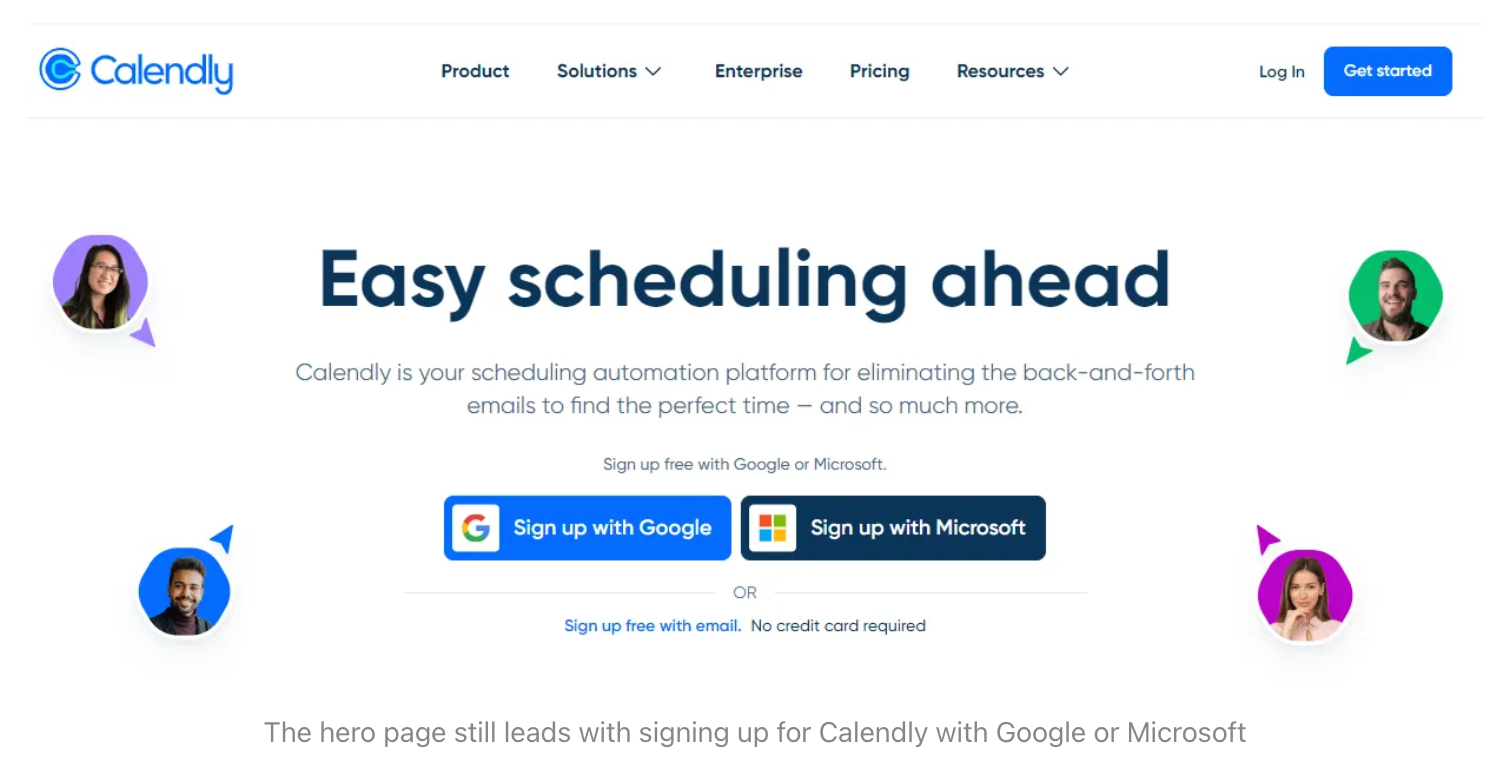
From there, it's all about iteration. Calendly tracks all the metrics that matter in dashboards so they can make changes to their site, their sales-led growth motion, and the way they speak to users.
Key insight: Test and optimize your website based on learnings. A good product-led growth motion is very, very iterative.
How to Use a Product-Led Growth Strategy for Go-to-Market
The implementation of a PLG strategy requires a fundamental shift in how companies view their products and their customers. It involves building for the user, using data, and thinking critically about key moments in your product that can either get users to convert into paying customers, refer other users, or upgrade.
I can summarize it with this infographic (borrowed elements from ProductLed.com and Pendo). The product-led model means engaging your users before you monetize them.

This is a sample go-to-market strategy geared for a company practicing product-led growth:
User research: Start with surveys, usage data, and your own product intuition to "know what makes your user tick"
Engage users before monetizing them: Let users engage with your product before making them buy -- often this means offering some "freemium" features.
Convert, expand, and refer: Help users engage and become paying customers. Help users refer more customers.
Product-Led Growth Metrics for Success
Understanding the important metrics is crucial for measuring the effectiveness of a PLG strategy. Use tools like Heap, Pendo, Mixpanel and/or Google Sheets to track them.
Time to value: Use your data to understand which users activate most quickly and the types of nudges that get them there.
User activation rate: Percentage of new users who reach a predefined level of engagement. Remember: Facebook's 7 friends in 10 days insight -- very specific data milestones indicate an "engaged" or monetizable user.
Direct and organic traffic: How many people are finding you by searching your brand name in Google or by typing your domain name into their browser? Use Google Analytics to track.
Lifetime value: Which user behaviors or attributes elicit the highest lifetime value (LTV) customers.
Customer churn: How many users or customers stop using the product every month.
Net promoter score (NPS): Measures user satisfaction and willingness to recommend.
Also read 📚: The 17 Most Important SaaS Metrics
Becoming Product-Led: Steps to Transformation
Transitioning to a PLG model involves a few key steps:
Step-by-Step Guide
Develop a user-centric culture: Place user needs and experiences at the forefront of your product development. Be discerning about what you build and if it's in the interest of product-led growth.
Freemium: Even if you don't use a freemium model, consider giving away as much of your product for free as possible -- either to Google searchers or to prospects.
Simplify onboarding: Use a product onboarding software so that users can quickly understand and start using your product.
Measure what matters: Consider the most important metrics for your user funnel. Which users are taking important actions and which users are paying.
Gather and implement user feedback: Use qualitative and quantitative methods to collect feedback.
Optimize for referrals: Get people who use your product to either expand by inviting teammates (like Slack) or by referring new users (like Loom).
A Future Towards Product-Led Growth
Moving forward, blending product-led tactics with traditional sales methods can create a seamless growth engine.
By aligning sales strategies with product insights, companies can optimize every user interaction for maximum value.
Transforming your business with product-led growth is not just a shift in strategy; it's a rebirth of your approach to customer experience. By leveraging powerful PLG strategies, you can propel your business to new heights of efficiency, scalability, and customer satisfaction.
Jump on the PLG bandwagon today and watch your product do the talking, and the selling, for you.
Also read 📚: 12 Product Tour Examples from B2B and B2C SaaS Companies
Also read 📚: 11+ SaaS Growth Hacks You Need to Know and Try
Also read 📚: How to Reduce SaaS Churn: 8 Actionable Steps
Convert more trials with Hopscotch
Simple and delightful onboarding tours your users will love.